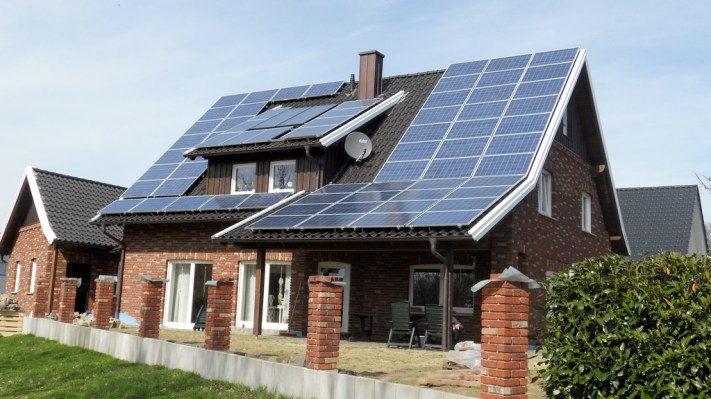How do you make a dent in the energy market? SolarCity is likely one of the few companies that has a good idea of how to answer that question, and one part of its plan includes replacing the roofs of 5 million U.S. homes with solar cells, according to The Guardian. It’s a plan that SolarCity board chairman Elon Musk first tipped on a conference call last month, but now we have a bit more specificity around scope.
The plan is not just to add solar capability to an existing roof, but to use roofing materials that actually integrate solar cells directly as a substitute for more traditional materials, such as tile or steel. The whole point of SolarCity’s approach is to lower some of the barriers to solar adoption for everyday homeowners, by creating a product that has a similar installation process and timeline when compared to traditional roofs, as well as a look that is not out-of-place or otherwise unattractive.
The Guardian reports that SolarCity wouldn’t comment on costs or other product details for the solar material, but price will likely be the key sticking point: The efforts of other companies to deliver similar products, including a Dow project launched in 2009 and finally discontinued this year, fell down because they were considerably more expensive than traditional roofs.
Businesses where Musk has a controlling interest have a proven track record of turning green tech efforts into viable consumer products where other companies have failed. But a 5 million household initial goal for SolarCity’s roofing plan means creating something that’s more accessible than the Tesla Model S, which still has only sold in the hundred thousand range since its introduction in 2012.
Still, there’s no timeline for the SolarCity goal reported by the Guardian, and we still haven’t seen the product or pricing. But SolarCity is also moving towards a merger with Tesla, which will allow it to much more easily offer customers a package that potentially includes home energy storage and a way to also power your car, all completely off-grid. The combined incentive, especially with a more affordable vehicle option thrown in via the Model 3, might prove a powerful motivator.
